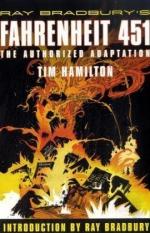|
This section contains 970 words (approx. 4 pages at 300 words per page) |

|
Faulkner's "That Evening Sun" (1931) and Bradbury's Dandelion Wine (1957) share an archetypal pattern that Maud Bodkin described in 1934. In her pioneer study, Archetypal Patterns in Poetry, Psychological Studies of Imagination, she refers to a "pattern" of the "Heaven and Hell Archetype" in which Satan struggles "upwards from his tremendous cavern below the realm of Chaos, to waylay the flower-like Eve in her walled Paradise and make her an inmate of his Hell, even as Pluto rose from beneath the earth to carry off Proserpine from her flowery meadow." As we shall see, both writers emphasize a hell (for Faulkner it is a "ditch," for Bradbury, a "ravine") that is inhabited by a devil figure who threatens a queenlike Eve in the warm security of her home. Considered collectively, these mythic and other correspondences between the two works reveal much about how literary minds, apparently working independently, can reshape archetypal...
|
This section contains 970 words (approx. 4 pages at 300 words per page) |

|


